
No matter whether it is in the home or in the project, the wireless network has applications everywhere. How to build a wireless network? Many friends may have related questions in the project. In this post, let’s discuss the six types of wireless networking.
Networking 1: Home wireless networking
Network diagram:
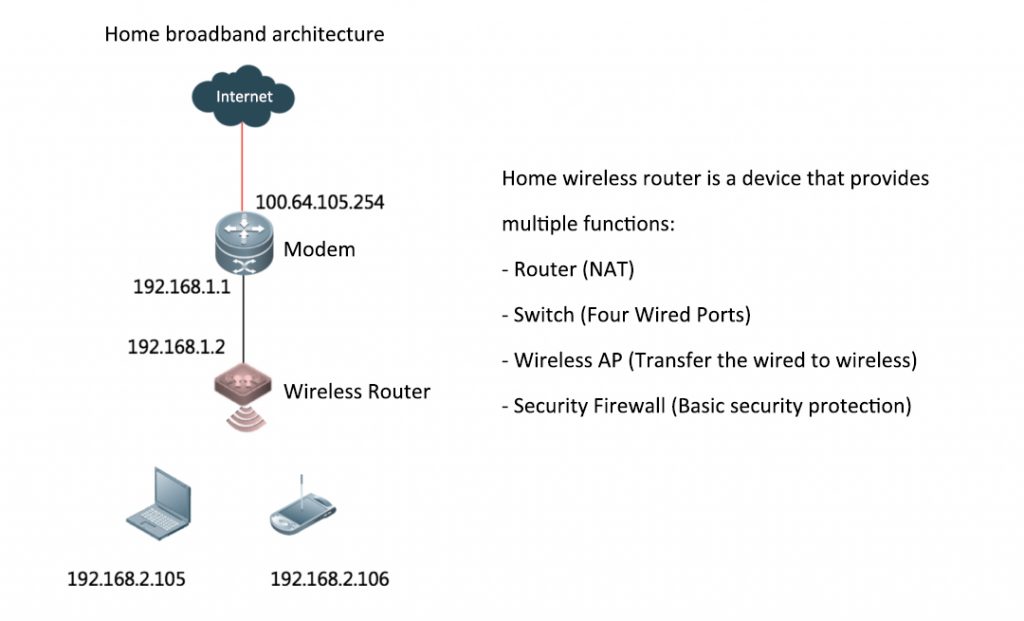
This is a typical home wireless networking. In this network, NAT is done twice, one at the wireless router and the optical modem. The wireless router converts the wired signal into a wireless Wi-Fi signal.
The wireless router can also be set to relay mode, and DHCP is performed on the optical modem, so that the wireless router only does Layer 2 transparent transmission without NAT.
Networking 2: Ad-Hoc network architecture
Network diagram:
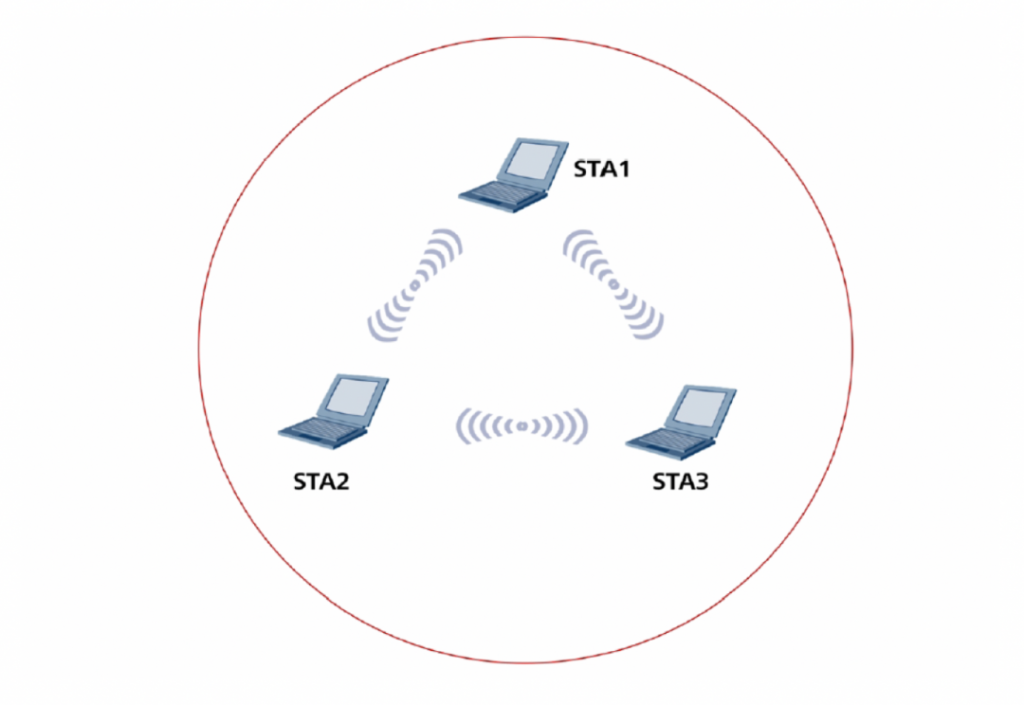
Picture users can create a wireless network on a laptop computer (system above Win7), which can be used to connect with other wireless terminals to realize LAN communication.
Networking 3: Wireless networking for small and medium-sized enterprises
Network diagram:
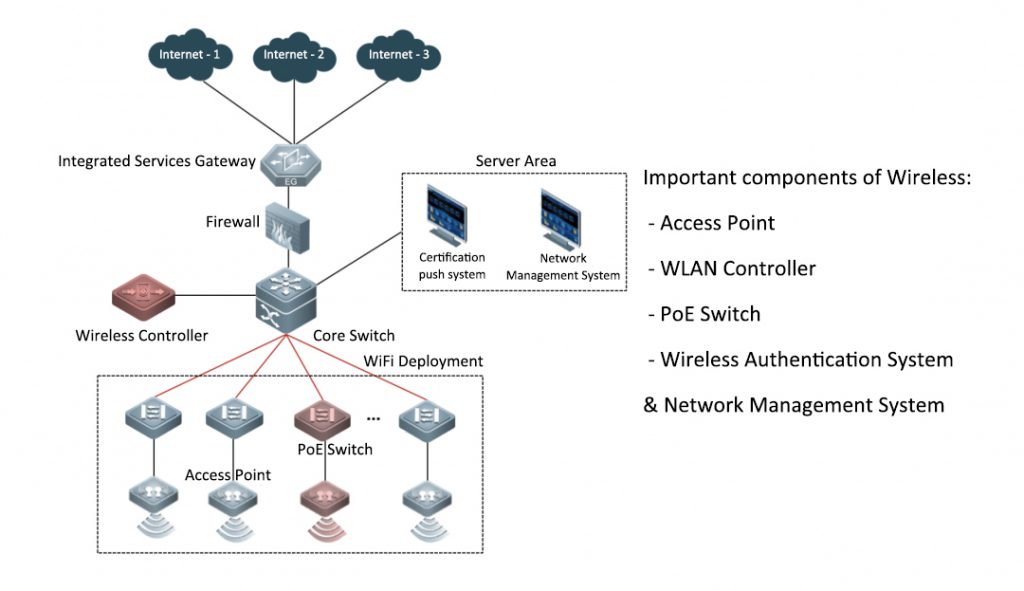
The three important components of wireless: wireless AP, wireless controller, and POE switch. The previous networking method is also the wireless networking method of conventional small and medium-sized enterprises.
Networking 4: Large-scale wireless networking architecture
Network diagram:
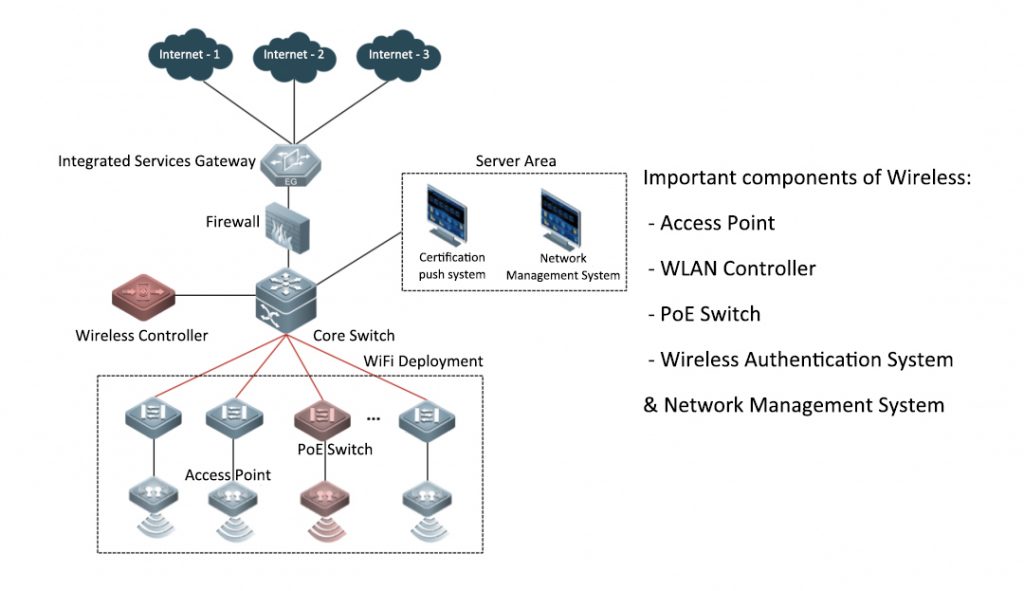
Like the third networking method, the scale and equipment are upgraded, and the selection of equipment is higher than that of the third in actual projects.
Network 5: WDS wireless bridge network
Network diagram:
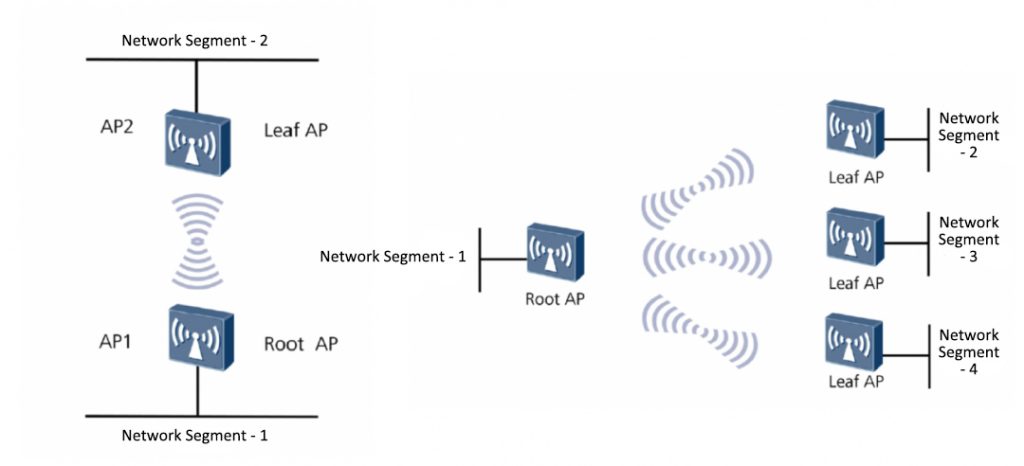
Bridging mainly realizes the interconnection of two networks through wireless. The previous article has introduced outdoor APs to you, and traditional outdoor APs can be set to bridge mode. Of course, the cost of using outdoor AO as a bridge is too high. Generally, manufacturers have specialized network bridge equipment for wireless bridging. The price is relatively lower and the bridging distance is longer.
Bridge networking is divided into two types: point-to-point and point-to-multipoint. As shown in the figure above, for scenarios with many access points, it is recommended to use point-to-multipoint networking to save the number of APs/bridges.
In the production environment, it is recommended to use the 2.4GHz frequency band as WDS bridge backhaul, with low signal attenuation, and 5GHz frequency band to realize user terminal access and reduce interference to achieve the best coverage effect.
Networking 6: MESH networking
Wireless Mesh Network (Wireless Mesh Network, WMN) refers to a mesh dynamic self-organizing self-configuring wireless network that uses wireless links to connect multiple APs, and finally accesses a limited network through one or two root nodes.
The network architecture is shown in the figure:
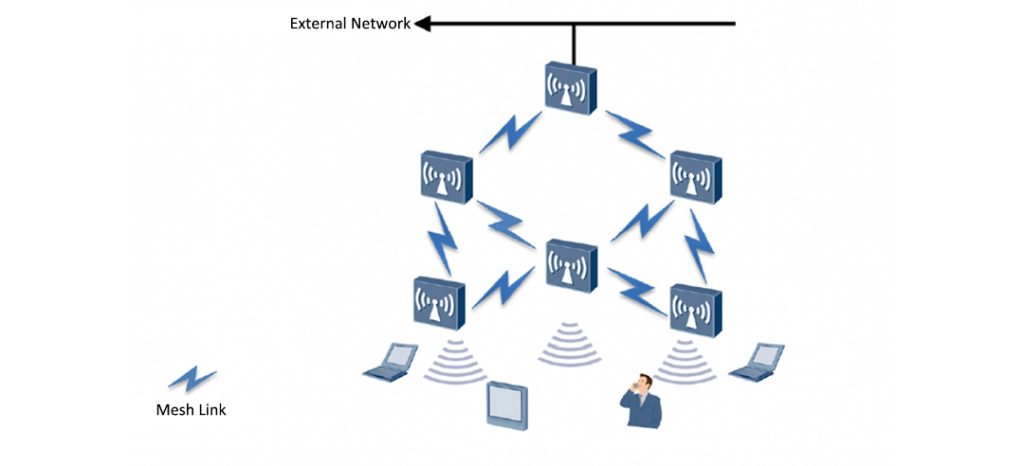
There is redundancy between wireless APs, which solves the problem of wireless single-point failure.
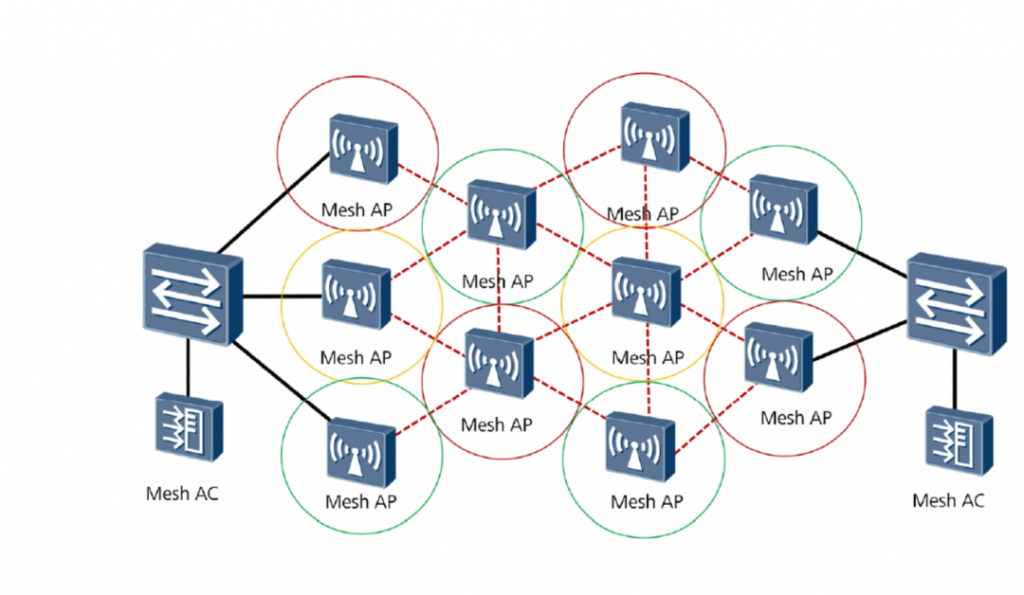
The red dotted line represents the Mesh backhaul link, and the circle represents the user access signal coverage.
MESH architecture networking is mainly used in storage environments or factories: this kind of scene has a large area and does not require wiring. Only MESH architecture networking can be used. AP is set to MESH mode, auto-negotiation, networking and data return, edge AP Just connect to the wired network, reducing the wiring work, and at the same time have the link redundancy function.
If you have different opinions, welcome to leave your comment.
Want to order wireless products? Welcome to contact us:
Related Topics:
Wireless Vendor Comparison: Ubiquiti vs Meraki vs Aruba
Why you should Upgrade to WiFi 6 Routers?
WiFi Booster VS WiFi Extender: Any Differences between them?


